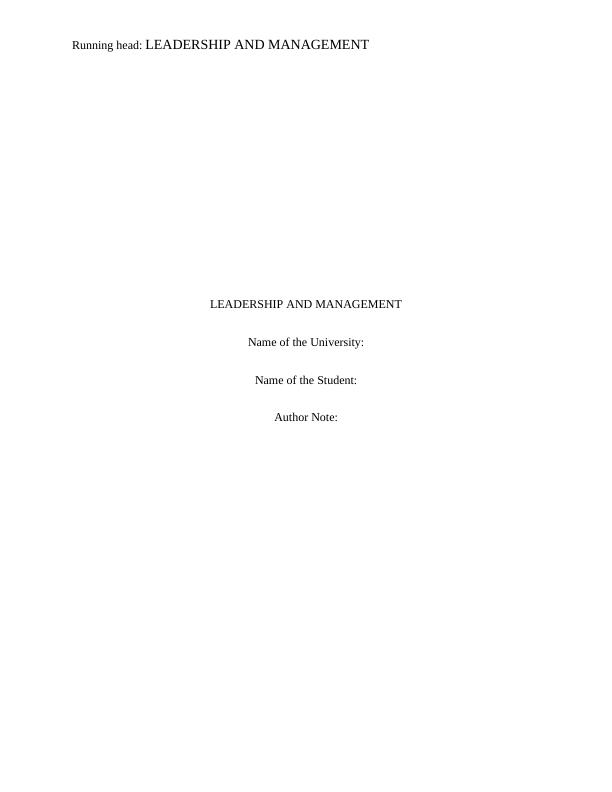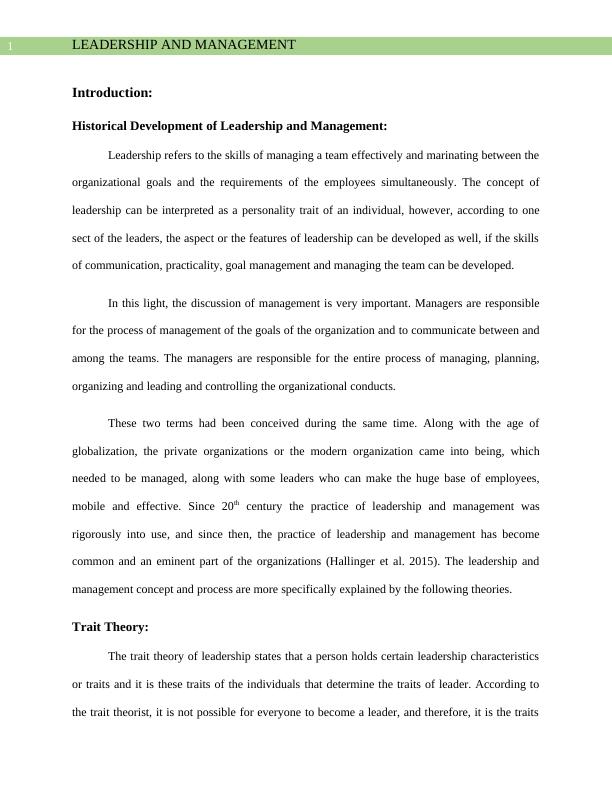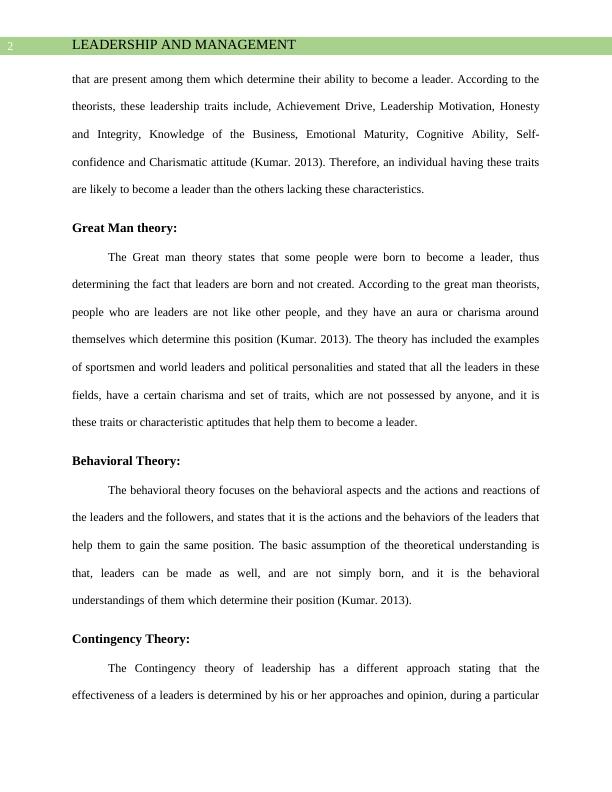Historical Development of Leadership and Management
6 Pages1376 Words10 Views
Added on 2022-08-20
Historical Development of Leadership and Management
Added on 2022-08-20
ShareRelated Documents
End of preview
Want to access all the pages? Upload your documents or become a member.
Leadership and Change Management: Impact on Employee Job Satisfaction and Organizational Obligation in the Construction Sector of UAE
|8
|2712
|376
Leadership Theories
|5
|1056
|51
Leadership Theories
|5
|1050
|22
Traits and Behaviors of Early Leadership Theories
|8
|1664
|359
The Assignment on Organizational Behaviour
|8
|2080
|34
Effectiveness of Leadership Theories and Motivational Theories in Organizational Behavior
|15
|4708
|266



